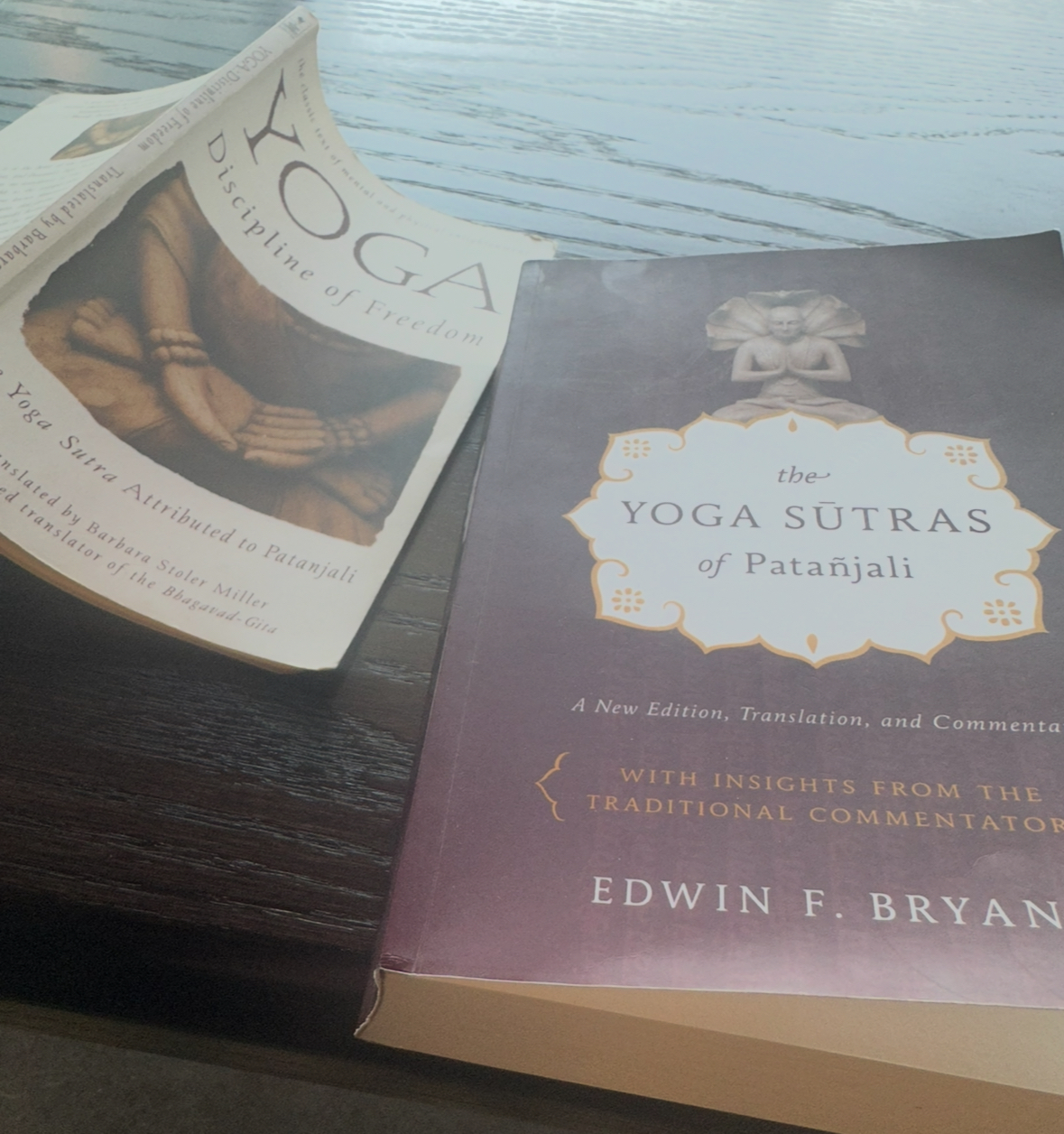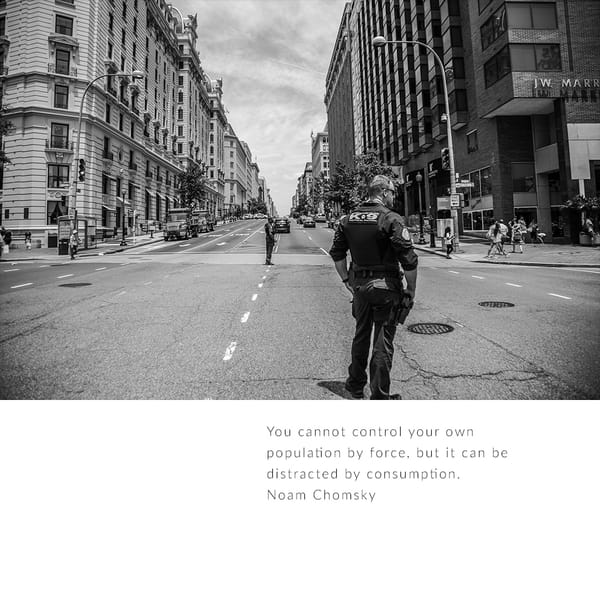Our Turning Minds
Yoga Sutra 1.2 and why it matters

For anyone paying attention, our now is intense. Some days— beyond intense. The daily dance of maintaining normalcy in a world that is anything but along with “paying attention” to what constitutes news these days as a protection mechanism for things beyond our control really is too much to handle. And I’m trained to handle it, or I should be.

So, after a particularly messy day where I simply lost the ability to “human” properly and just laid on the floor and wept like a toddler, for no clear reason or event— just a cumulation of “all the things”, I decided it was time to just hit the fuck it switch and return to the thing that brought me to the Rockies 5 years ago.
Yoga.
Today’s a new day, right? I grabbed the compass for yogis and headed over to the Coffeeshop with my pup to realign with my yoga in a way that far surpasses the physical practice. It was time to have a conversation with the Yoga Sutras and restore the peace that I sought in pursuing my academic studies in yoga.
I grabbed two copies of The Yoga Sutras (I have at least 4 versions in my personal library) but these two texts are vastly different interpretations. Both are necessary and resonate. The smaller of the two is also translated by an amazing woman, a rare event for ancient wisdom texts which are mostly translated by white men, especially the original translations done in the field by explorers in the 19th century, also widely known as colonizers.
The first sutra is EXACTLY the thing I struggle with the most, especially in a world on fire, which is probably why Patanjali started with this sutra.
1.2 yogas citta-vritti-nirodhah
Yoga is the stilling of the changing states of the mind.
No shit. Sutra One = epic fail for this yogi. Again and again. My inability to control the ongoing narratives that play in my mind is one of the main reasons I turned to yoga 15 years ago. And still, I struggle with the fundamentals of this practice on a daily, hourly, minute to minute basis. Amplified by my toxic instance on scrolling socials for the next devastating reality I need to navigate. And I know I’m not alone.
The intense translation of The Yoga Sutras, all 600 pages of it, devotes quite a bit of paper real estate to this passage. For obvious reasons. The biggest take away from this section for me is two fold. Exploring the “turnings of thought” (citta-vritti) and the composition of the thought process, or “mind” as Patanjali explains it. In this sutra, the “internal body” which is essential in understanding our ability to work with the turnings of thought (and eventually still this spinning). He defines this internal body as buddhi (intelligence), ahankara (ego) and manas (mind), which “constitute the inner life of an individual, and the purusa soul is cloaked in these psychic layers prior to receiving a gross physical body equipped with senses.” The Yoga Sutras of Patanjali, by Edwin Bryant, page 12.
Translation: your intelligence, ego and mind are established BEFORE your physical form and yogis believe that your karma is a strong determinant in the balance and health of your “internal body”.
We’re born with this shit and our ultimate goal is to find the balance between all three elements so we can calm the constant churning of thoughts that overrun our ability to simply be present in the world.
But how?
Well, that’s the whole damn point of yoga. Most people don’t know that yoga isn’t just physical poses that help you fit into those lovely overpriced yoga pants and “get your zen on”. The physical poses in yoga (asanas) are designed specifically to still the turning of the mind so one can sit in meditation afterwards.
Unfortunately, the wellness industry has appropriated so much of yoga’s wisdom to prop up an entire industry to sell unnecessary materialism for people desperate to do what this first sutra prescribes— stilling the mind.
Barbara puts it more succinctly in her translation: “Insofar as the subtle mental processes are active, the subject or self is necessarily unstable and agitated. The goal of yoga is to stop the thought processes so that the spirit can be free, isolated from the turmoil of thought from which it mistakenly takes its identity.” Yoga, Discipline of Freedom, By Barbra Stoler Miller, page 30.

These texts were written thousands of years ago and have guided humans through turmoil for the duration of their existence. It seems wildly appropriate to return to them now, when our ability to still the mind and not drown in the tsunamis of chaos barreling at us on the daily is greatly hindered.
One of the more beautiful aspects of my deep yogic studies at Naropa was academic pursuit of understanding these yogic texts, including Sanskrit, to better apply this ancient wisdom technology to the modern shitshow we’re all trying to navigate.
Our ancient wisdom traditions, of all beliefs, hold the wisdoms of our elders and are the tools we must embrace to navigate the merciless technological weapons being forced upon us by a handful of billionaires who do not believe in humanity itself. They believe in a version of existence where humans are optional, blood transfusions from young people are the key to longevity and invasive surveillance is the only path to freedom.
We can create our own alternative pathways to freedom that completely remove the algorithms of the antichrists like Thiel and Musk. We can calm the turnings of the mind with tools that require no materialism whatsoever to deploy.
Our breath. Our motion. Our consciousness.
All tools which we can access in this moment, as you close this essay. Simply feel the earth beneath your feet. Close your eyes. Take 3 deep breaths. Touch the unrelenting spinning of thoughts and just acknowledge that they exist. Take another breath and move on with your day. Rinse and repeat as you travel through your day, especially when the spinning of thoughts is too much to bear.
And if you’d like to dive deeper into the intersections of emergent tech and society, please check out my podcast at The Human Layer.




